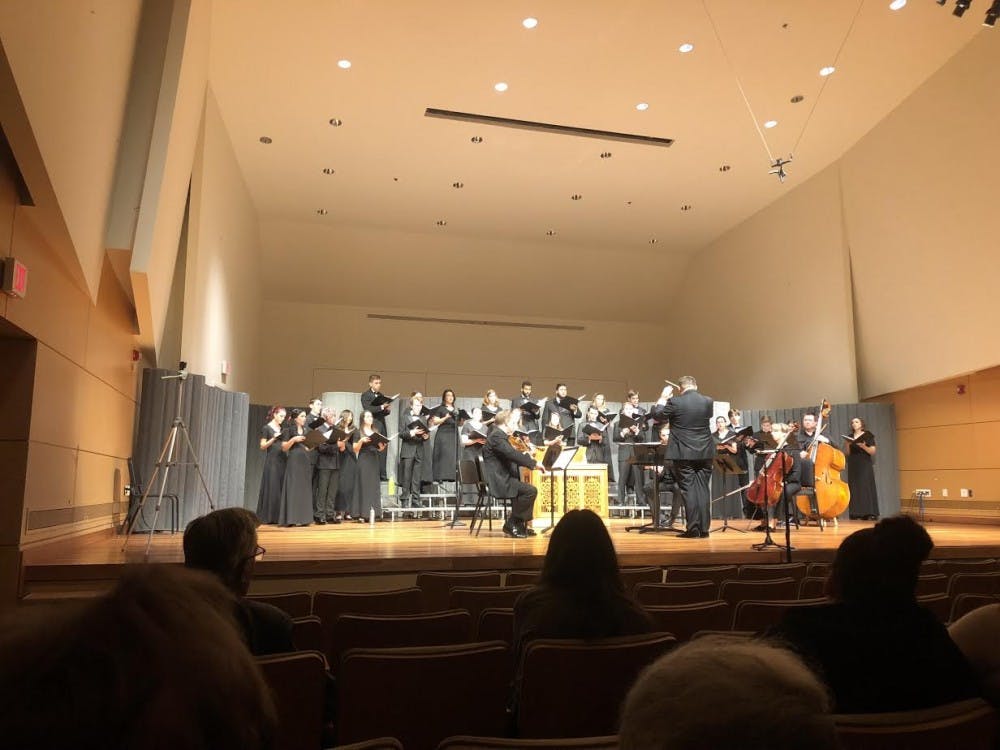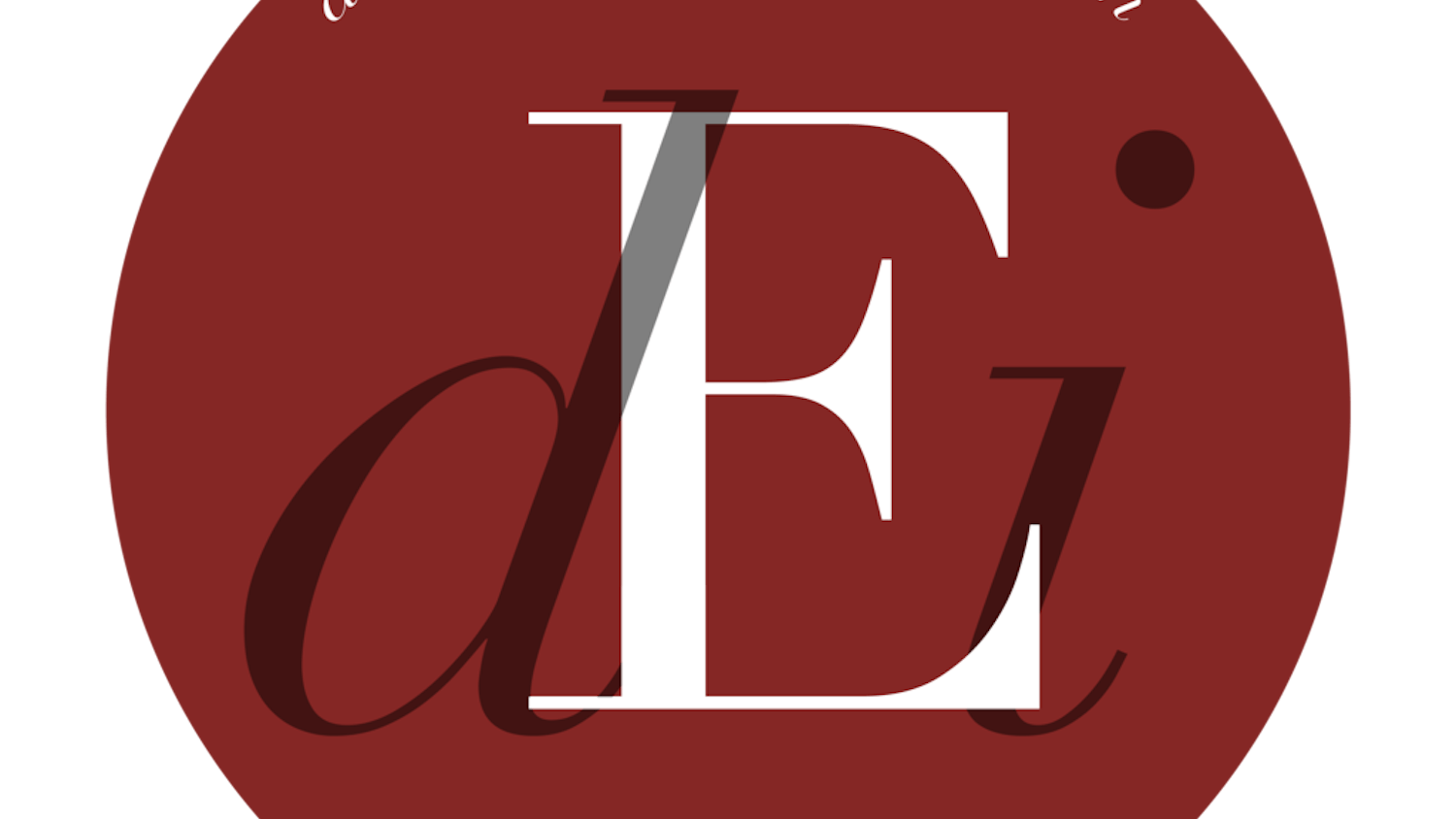The American University Chamber Singers’ winter concert, “In Our Hands: Music Shaped by the New World,” took audience members on an alluring journey through time and place right in the comfort of our very own Abramson Family Recital Hall on Nov. 4. The ensemble seamlessly linked a myriad of styles from European, Latin American and North American traditions, all leading up to a feature on choral music in the modern United States.
Chamber Singers conductor Casey Cook introduced the concert as “a program of music from various different traditions.” Delving into the history of music theory and performance between pieces, he explained the intricacies of these varying styles and how they ultimately “shaped modern America’s music.”
Listening to the ensemble’s introspective and enlightening take on musical development across cultures and regions was a remarkably educational experience. Beginning the concert with German composer Felix Mendelssohn’s “Weihnachten,” the ensemble emerged with a strong, unified sound, allowing audience members to relish in the piece’s overlapping melodies and swells.
In preparation for their upcoming tour of Greece this May, the performance transitioned to two Greek pieces. Greek composer Francesco Londariti’s “Kyrie” showcased the group’s balanced blend of harmonies across registers, while their rendition of Theodore Antoniou’s “Hymn to Love” enchanted the audience with their pure, open tone.
The Chamber Singers further expanded their horizons, quite literally, in their performances of pieces from the Western Hemisphere, specifically Latin America and Cuba. Cuban musician Miguel Matamoros’ “Son de la Loma” showcased a brighter tone and bouncier rhythms, as well as an overall honeyed sound, as the high soprano melody expanded to include fuller harmonies.
Another crowd favorite from this section was Guido López Galiván’s “El Guayaboso.” This piece falls under the Cuban subgenre of rumba, known as guaguancó, and it immediately wowed audience members with its quick, percussive tempo. As the piece progressed, the juxtaposition of upbeat vocal percussion with sections of fuller, more extravagant, and united harmonies set the scene for the fascinating unfolding of “a tall tale children’s rhyme,” as Cook described the piece.
“We move from Cuba to North America!” he announced. The Chamber Singers’ tribute to North American musical traditions featured Revolutionary-era pieces, including “Rose of Sharon” composed by William Billings, the first American choral composer, and spirituals such as “Daniel, Daniel, Servant of the Lord.”
The most memorable piece from this section was their performance of Canadian composer R. Murray Schafer’s “Miniwanka,” which Cook prefaced as a “slightly stranger piece.” He introduced the piece by first holding up the music score to the audience and allowing the audience to see for themselves the improvisatory, atypical notation system they were to perform.
Aspiring to recreate the various sounds of the water cycle, ranging from “a calm lake” to “a roaring ocean in the midst of a storm,” the Chamber Singers experimented with a combination of vocal percussion and sliding pitches, ultimately amplifying their already captivating, euphonic performance.
The concert interlaced performance and educational explanations by Cook on how the music of modern America draws from various traditions “from gospel to spiritual to folk songs to tunes from Appalachia to modern tone cluster singing.” The varying styles and techniques between the ensemble’s performances of Shawn Kirchner’s “Hallelujah,” “I’ll Fly Away,” and “Unclouded Day” were a testament to the vast array of traditions and techniques now represented in American music today.
Each ensemble member’s musical precision and personal involvement added to the educational and interdisciplinary nature of this concert, as it shone a light on musical development over history. If you ever have the chance to attend a performance by the Chamber Singers, I highly recommend it. This concert provided an insightful and entertaining glimpse of the history of music theory, featuring a wide variety of pieces that anyone can enjoy.





